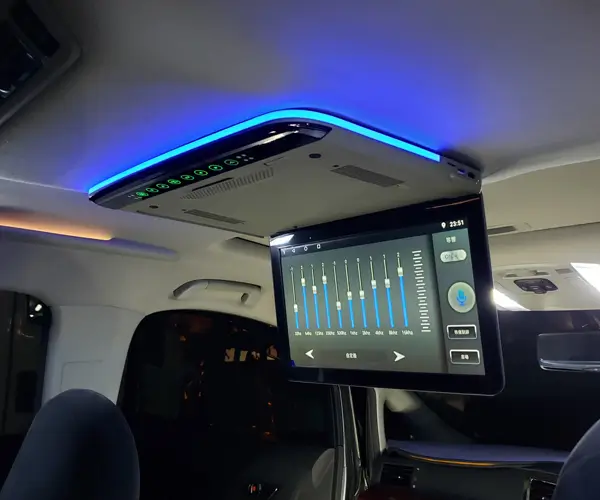Imagine this: a tiny microcontroller sitting comfortably on your desk, ready to bring your ideas to life, whether it’s automating a simple task or creating a complex robotic masterpiece. At the heart of many Arduino projects, especially in robotics and automation, lies a humble but powerful component — the servo motor. Understanding how to control this motor using basic Arduino code opens up a universe of possibilities, from precise robotic arms to automated camera sliders.

What is a Servo Motor?
Before diving into the code, let's clarify what a servo motor is. Unlike regular motors that spin continuously, a servo motor is designed to rotate to specific angles within a limited range—often 0 to 180 degrees. This position control capability makes servo motors ideal for applications requiring precise movement, such as robotic joints, antenna positioning, or even camera gimbals.
A typical servo motor assembly includes a motor, a potentiometer (for position feedback), and a control circuit. When you send a PWM (Pulse Width Modulation) signal to the servo, it interprets the pulse width to set its shaft at a corresponding angle. It's like giving it a tiny, digital "go-to" command for position.
Getting Started with Arduino and Servo Motors
The beauty of Arduino is its accessibility. With just a few lines of code and minimal hardware, you can command a servo motor to swing back and forth, follow a set of positions, or execute complex sequences. Let’s set the foundation for your control project.
Hardware Requirements:
Arduino board (Uno, Mega, Nano, etc.) Standard servo motor (e.g., SG90, MG995) Jumper wires Power supply if required (some servos draw more current than the Arduino can supply directly) Breadboard (optional, for easier connections)
Wiring the Servo Motor:
Connect the servo's power wire (usually red) to the 5V pin on Arduino. Connect the ground wire (usually black or brown) to the GND pin on Arduino. Connect the control signal wire (usually yellow, orange, or white) to a digital PWM pin on Arduino, say pin 9.
Basic Arduino Servo Code
Here's the classic “Hello World” of servo control: moving the servo from 0 to 180 degrees and back.
#include Servo myServo; // create servo object to control a servo void setup() { myServo.attach(9); // attaches the servo on pin 9 } void loop() { // Sweep from 0 to 180 degrees for (int pos = 0; pos <= 180; pos++) { myServo.write(pos); // tell servo to go to position in variable 'pos' delay(15); // waits 15ms for the servo to reach the position } // Sweep back from 180 to 0 degrees for (int pos = 180; pos >= 0; pos--) { myServo.write(pos); delay(15); } }
This simple program makes the servo sweep back and forth continuously, demonstrating the fundamental control method. You'll notice the use of the Servo library, which simplifies PWM management, making your code cleaner and easier to understand.
Understanding the Code
#include loads the servo library—no need to mess with raw PWM signals. Creating an instance of Servo allows you to control the servo with the write() function. attach(9) links the servo object to pin 9. The for loops increment and decrement the position, creating smooth movement. delay(15) ensures the servo has enough time to reach the position before moving on; this value can be adjusted for speed.
Fine-tuning Your Servo Control
While this basic code works well for many applications, real-world projects often require more finesse. For example:
Limiting movement range to avoid mechanical strain. Synchronizing multiple servos. Creating more complex motion sequences.
But first, mastering the basic movement is the crucial first step.
Beyond the Basics: Practical Applications
Once comfortable with simple sweeps, the next step is to harness servo control in real-world projects. Popular uses include:
Robotic arms and grippers: precise movements for grasping and positioning objects. Camera stabilization and tracking: smooth panning and tilt functions. Automated curtains or blinds: opening and closing based on light or schedules. Educational demonstrations: teaching principles of automation and control systems.
With the core understanding of how to send PWM signals and leverage the Arduino Servo library, you can start building these projects and customizing them with your own code.
Expanding Horizons: Using Sensors to Control Servos
Imagine combining your servo with sensors—light sensors, temperature sensors, proximity sensors—adding interactivity to your projects. For example, using a photoresistor, your servo could turn a solar panel toward the brightest light source.
Here's a simple concept: reading an analog sensor, mapping that value to a servo position, and then updating the servo accordingly.
#include Servo myServo; int sensorPin = A0; // Analog input pin for sensor int sensorValue = 0; // Variable to hold sensor reading void setup() { myServo.attach(9); Serial.begin(9600); } void loop() { sensorValue = analogRead(sensorPin); // Map sensor value (0-1023) to servo angles (0-180) int angle = map(sensorValue, 0, 1023, 0, 180); myServo.write(angle); Serial.print("Sensor: "); Serial.print(sensorValue); Serial.print(" -> Angle: "); Serial.println(angle); delay(100); }
This code enables automatic servo movement based on sensor input, opening the door to many interactive and responsive projects.
In Conclusion (Part 1)
Getting started with basic servo motor code on Arduino is a rewarding experience, marking the first step into a broader world of automation, robotics, and control systems. The core principles you've learned — attaching the servo, writing simple control commands, and experimenting with movement — are the foundation for more advanced projects ahead.
In the next part, we’ll delve into more sophisticated control techniques, such as using potentiometers for manual control, implementing precise position algorithms, and tackling common challenges like jitter and power issues. Plus, we'll explore how to integrate sensors and add advanced features to your servo projects.
Stay tuned—your journey into the world of Arduino-controlled servos is just gaining momentum.
Let's proceed with part 2 once you're ready!
Leveraging innovations in modular drive technology, Kpower integrates high-performance motors, precision reducers, and multi-protocol control systems to provide efficient and customized smart drive system solutions.




































